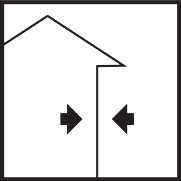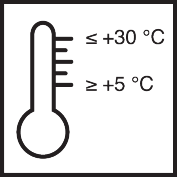Article No. 058805
Mineral stone substitution mortar, pourable
Product specifications
On delivery
The stated values represent typical product characteristics and are not to be construed as binding product specifications.
Field of application
- Moulding statues and sculptures using a casting process
- Casting with open and closed moulds
Properties
- Pourable
- Low free alkali content
- Low inherent stress
- UV-resistant pigments
- Can be made hydrophobic
-
Preparation
-
Substrate requirements
Clean, dust-free and capable of supporting a load.
-
Preparations
Any necessary cleaning measures should be performed as gently as possible, e.g. by spraying with cold or hot water or steam cleaning; stubborn dirt should preferably be cleaned using the rotec soft blasting method or Remmers cleaning products (e.g. Clean FP, Clean AC basic, Clean WR).
Preserve valuable heritage ornamental elements and statues by carefully removing encrusted dirt and using the appropriate Remmers Stone Strengthener to carry out repeated intensive strengthening.
-
-
Application
-
Construct formwork if necessary.
Create a contact layer if necessary.
Slowly allow the mortar to flow along a suitable wooden batten or via a filling device into the mould in a thin, even layer.
Re-compact if necessary.
Depending on the size and shape of the copy created, it may be removed from the formwork and reworked if necessary after approx. 24 hours.
Wait at least 24 hours before applying subsequent layers.
-
Application instructions
-
Once it has hardened, mortar must not be made workable again by adding either water or more wet mortar.
The type and duration of the reworking and surface treatment will influence the colour.
Slight deviations in colour between different batches are possible.
Protect wet mortar surfaces against frost, rain and drying out too quickly for at least 4 days.
-
-
Working tools / cleaning
-
Mixing tool, smoothing trowel, slurry brush, filling aid/measuring cup
Clean tools with water while the material is still fresh.
-
Storage / shelf life
-
If stored in an unopened container and in a dry place, the product will keep for approx. 12 months.
-
Usage
-
Approx. 1.8 kg/l cavity volume
-
Apply to a large enough trial area to determine the precise amount required.
-
General information
-
May contain traces of pyrite (iron sulphide).
Do not use on gypsum-based substrates.
The characteristic data of the product were calculated under laboratory conditions at 20°C and 65% relative humidity.
The mixing water must be of drinking water quality.
Low chromate content in accordance with Directive 2003/53/EC.
Special colour according to colour number (MF no., colour swatches, NCS etc.) or submitted sample (in the case of changing or alternating colours, clearly mark the desired colour).
The colour that is obtained after drying and hardening depends on the ambient conditions and the processing method. For instance, a freshly smoothed surface will be lighter than one that is smoothed later or roughened. Different grain sizes of the same product may lead to slight differences in colour. Substrates soaked from the back may cause discolouration.
Always set up a trial area/trial areas first.
Alkaline binders may cause a dissolution process on non-ferrous metals.
Current regulations and legal requirements must be taken into account and deviations from these must be agreed separately.
The relevant test certificates must be observed when planning and carrying out work.
-
-
Disposal instructions
-
Larger quantities of leftover product should be disposed of in the original containers in accordance with the applicable regulations. Completely empty, clean containers should be recycled. Do not dispose of together with household waste. Do not allow to enter the sewage system. Do not empty into drains.
-
-
Safety / regulations
-
For further information on the safety aspects of transporting, storing and handling the product and on disposal and environmental matters, please see the current Safety Data Sheet.
-








![ZM HF [basic] ZM HF [basic]](https://m.remmers.com/gebindeabbildungen/2400w/52838.png?w=100&version=1)




